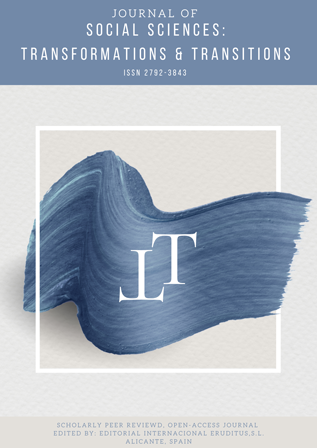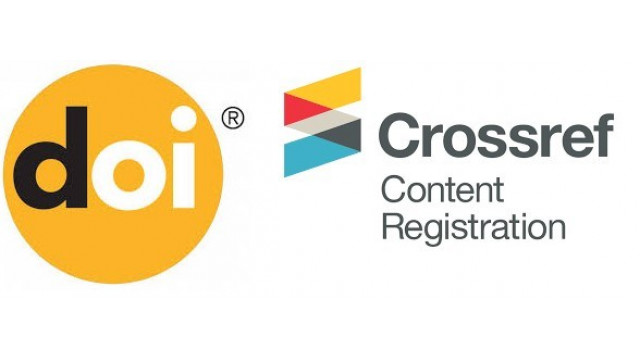Gender equality in Tunisia: current trends
DOI:
https://doi.org/10.52459/josstt1140721Keywords:
Tunisia, Gender equality, Code of Personal Status, Feminism, Political participation, Women’s rights, Political IslamAbstract
Tunisia has come a long way towards achieving gender equality and remains a prominent example to other Arab countries in this experience. Meanwhile, Tunisia still takes only modest positions in international rankings on various indexes measuring gender gap. This work examines, with the help of a comparative-historical method, the formation of the women's movement in Tunisia and the development of legislation on gender equality. Then, through statistical data the author outlines the extent of women's economic, social, and political participation, and, finally, referring to the "concept of representation" by Hanna F. Pitkin (1967), the author looks at the pre-election programs of political parties that won the 2019 parliamentary elections, in order to assess the perception of the problem of women's emancipation in Tunisian society on the whole.
As a result of the research, the author comes to the conclusion that, despite progressive legislative framework guaranteeing women's rights, the mass consciousness of Tunisians maintains a set of ideas and norms on gender inequality generated by Islamic tradition and fostering the discrepancy, first in the existing legislation and the objective reality, and secondly, between the rules of family law containing elements of Sharia, and the provisions of the Constitution, as well as the accepted international obligations.
Cite this paper:
Kashina, Anna 2021. "Gender equality in Tunisia: current trends" JOSSTT 1(01):04. DOI: https://doi.org/10.52459/josstt1140721
Metrics
References
Al-Quran
Amin Q. 1900. Al-Mara’a al-jadida [The new woman]. Reprint, Cairo: Dar al-Ma’arif, 1972.
Annuaire Statuesque de la Tunisie 2014-2018. 2019. Tunis : INS. Retrieved from http://www.ins.tn/publication/annuaire-statistique-de-la-tunisie-2014-2018
Ben Romdhane M. 2011 Tunisie: état, économie et société. Ressources politiques, légitimation et régulations sociales. Tunis: Sud Editions.
Bessis S. 1999. Le féminisme institutionnel en Tunisie : Ben Ali et la question féminine . Clio. Femmes, Genre, Histoire. no 9 (1999). Retrieved from http://journals.openedition.org/clio/286 DOI : 10.4000/clio.286
Brand L.A. 1998. Women, the state, and political liberalization: Middle Eastern and North African experience. ISBN: 9780231112673. New York: Columbia University Press. (http://cup.columbia.edu/book/women-the-state-and-political-liberalization/9780231112673)
Changing Laws and Breaking Barriers for Women’s Economic Empowerment in Egypt, Jordan, Morocco and Tunisia. 2020. OECD/ ILO/ CAWTAR. Retrieved from https://www.ilo.org/africa/information-resources/publications/WCMS_760505/lang--en/index.htm
Charrad M. M. 2001. State and women’s rights: the making of postcolonial Tunisia, Algeria and Morocco. ISBN: 9780520225763. Berkley and Los Angeles: University of California Press.
Charrad M. M. 1997. Policy shifts: state, Islam, and gender in Tunisia, 1930s–1990s. Social Politics, 4(2): 284–317. DOI https://doi.org/10.1093/sp/4.2.284
Daniele G. 2014. Tunisian Women's Activism after the January 14 Revolution: Looking within and towards the Other Side of the Mediterranean. Journal of International Women's Studies, 15(2), 16-32. Available at: https://vc.bridgew.edu/jiws/vol15/iss2/2
First continental report on the implementation of Agenda 2063. 2020. AU, NEPAD. ISBN 978-1-928527-22-0. Retrieved from https://library.unccd.int/Details/fullCatalogue/1412
Ganmy M. 2017. Qararat Essebsi li-salih el-mar’a tusiru djadalan fi tunis [the Decisions of Essebsi in favour of women cause debate in Tunisia] Alarabiya, 14.08.2017. Available at: http://ara.tv/b2rxy
Global Gender Gap Report 2021. 2021. World Economic Forum. ISBN-13: 978-2-940631-07-0. Retrieved from https://www.weforum.org/reports/global-gender-gap-report-2021
Gribaa, Boutheina, Depaoli G. 2014. Profil Genre de la Tunisie (en Arabe). Retrieved from https://eeas.europa.eu/archives/delegations/tunisia/documents/page_content/profil_genretunisie2014_ar_longue_fr.pdf
H̱ālid Aḥmad 1985. Aḍwāʼ min al-bīʼaẗ al-tūnisīyaẗ ʿalá al-ṭāhir al-ḥaddād wa niḍāl ǧīl [View from Tunisia on Tāhir al-Haddād and the fight of generation]. Tūnis: al-Dār al-Tūnisīyaẗ lil-Našr.
Haddad T. 1930. Imra'atuna fi al-shari'a wa al-mujtama'a [Our Woman in Law and Society]. Tunis: Maison tunisienne de l'édition.
Klibi, Ch. 2012. Habib Bourguiba, Radioscopie d’un règne. Tunis: Sud Editions.
Les Femme en Tunisie, 2000. 2002. Tunis: CREDIF.
Marzouki, I. 1999. Femmes d’ordre ou désordre de femmes? Tunis: Noir sur Blanc.
Muhibbu-Din M.O. 2019. Feminism and Modern Islamic Politics: The Fact and the Fallacy. International Journal of Islamic Thought, 15 (2019): 44-59. Available at https://doi.org/10.24035/ijit.15.2019.005
Murphy, E. C. 2003. Women in Tunisia: Between State Feminism and Economic Reform. In Doumato E.A., Posusney M. P. (Eds.) Women and Globalization in the Arab Middle East. Boulder and London: Lynne Rienner Publishers.
Pitkin H.F. 1967. The concept of representation. Berkley: University of California Press. https://doi.org/10.1525/9780520340503
Recensement Général de la Population et de l’Habitat 2014. Vol. 9 : Caracteristiques économiques de la population. 2017. Tunis : INS.
Sraieb N. 1997. Tunisie: La Politique Sociale et Culturelle de 1987 a 1997 in Annuaire de l’Afrique du Nord, tom xxxvi, 1997, CNRS Editions: 47 – 78.
The World Bank Data, 2021. Available at: https://data.worldbank.org/indicator/SG.GEN.PARL.ZS?locations=TN
Trabelsi H. 2019. Al-musawa fi el-irs miqiyas fi ikhtiyyar ra’is tunis al-muqbil [Gender equality in inheritance is a criteria for choosing next president of Tunisia], Independent Arabia, 06.09.2019. Available at: https://www.independentarabia.com/node/53996/%D8%A7%D9%84%D8%A3%D8%AE%D8%A8%D8%A7%D8%B1/%D8%A7%D9%84%D8%B9%D8%A7%D9%84%D9%85-%D8%A7%D9%84%D8%B9%D8%B1%D8%A8%D9%8A/%D8%A7%D9%84%D9%85%D8%B3%D8%A7%D9%88%D8%A7%D8%A9-%D9%81%D9%8A-%D8%A7%D9%84%D8%A5%D8%B1%D8%AB-%D9%85%D9%82%D9%8A%D8%A7%D8%B3-%D9%84%D8%A7%D8%AE%D8%AA%D9%8A%D8%A7%D8%B1-%D8%B1%D8%A6%D9%8A%D8%B3-%D8%AA%D9%88%D9%86%D8%B3-%D8%A7%D9%84%D9%85%D9%82%D8%A8%D9%84
Voronchanina N.I. 1998. Women’s issue in North Africa countries in Arab countries of West Asia and North Africa, no.3. Moscow: RAS, IIMES.
World Employment and Social Outlook 2021. The role of digital labour platforms in transforming the world of work. 2021. ILO. ISBN 9789220319413Retrieved from https://www.ilo.org/global/research/global-reports/weso/2021/WCMS_771749/lang--en/index.htm
Published
Issue
Section
License
Copyright (c) 2021 Anna Kashina

This work is licensed under a Creative Commons Attribution 4.0 International License.









